
In general, when designing ordinary single- and double-sided boards, there is no need to consider the issue of PCB lamination. Typically, copper thickness and board thickness that meet the design requirements are selected directly for processing. However, when designing PCBs with more than 4 layers, lamination design directly affects the performance and price of the PCB.
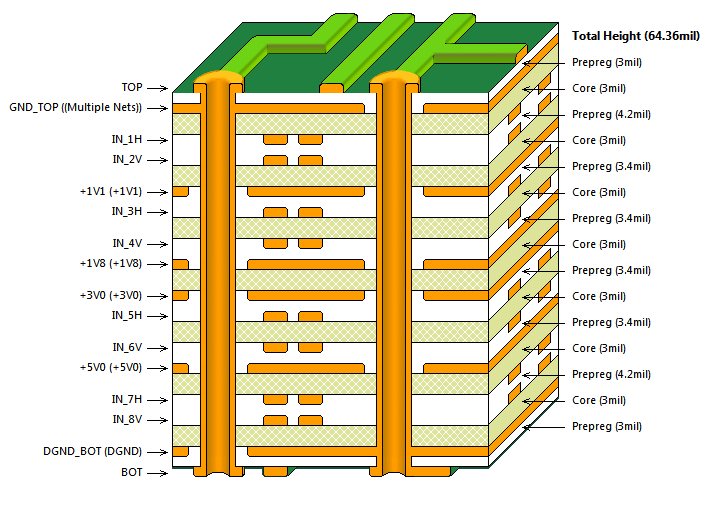
16-layer PCB lamination
The multi-layer PCB is made by combining copper-clad cores (Core), semi-cured films (prepreg, referred to as PP), and copper foil according to the laminate design, and then pressed into shape.
Before the PCB design starts, the Layout engineers will determine the number of layers of the PCB according to the size of the board, the scale of the circuit, and the requirements of electromagnetic compatibility (EMC). Then they will determine the component layout, and finally confirm the division of signal layers, power layers, and ground layers.
PCB laminate design requires consideration of multiple factors, including layer count, signal types, board thickness, material selection, copper thickness, impedance control, EMI/EMC shielding, thermal management, cost, and testability.
For critical signal lines, it is necessary to establish a GND/Signal/GND laminate combination, with adjacent signal layers using stripline and cross-vertical routing to minimize crosstalk coupling. From the perspective of signal integrity, critical high-speed signals should use stripline routing, while non-critical high-speed signals can choose to use microstrip routing.
Unless necessary, it is not recommended to use broadside-coupled stripline. Exposure and etching offsets during PCB processing can cause overlap misalignment, making the processing difficult and difficult to ensure consistent impedance.

Types of Microstrip and Stripline Routing
FR-4 can meet the needs of most PCBs, is inexpensive and has good electrical performance. High-speed PCBs will use high-speed board materials, such as Panasonic's Megtron4/6, and RF PCBs will use carbon-hydrogen, Teflon, or ceramic substrates. Design scenarios with high heat dissipation requirements, such as automotive light board, will use aluminum or copper-based board materials, while display scenarios such as Mini LED will use glass-based substrates.
Key performance indicators for board materials are as follows:
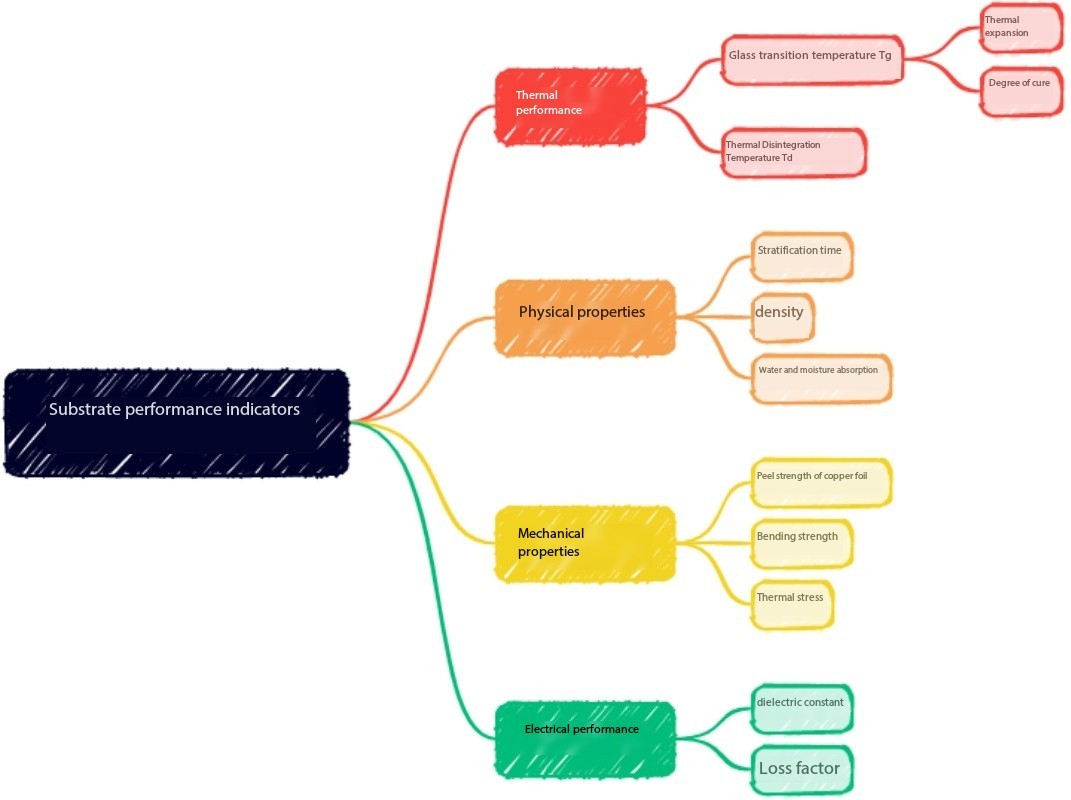
High-speed PCBs require dielectric materials with the lowest possible loss tangent and a small dielectric constant. The design of high-speed PCBs requires special attention to the material specifications, including glass fiber (Fiberglass), dielectric matrix (Dielectric Matrix), and copper (Copper). Signals at higher data rates have higher frequency components, shorter wavelengths, and more reflections caused by impedance discontinuities. Consideration should be given to the effects of fiber glass and copper foil surface roughness.
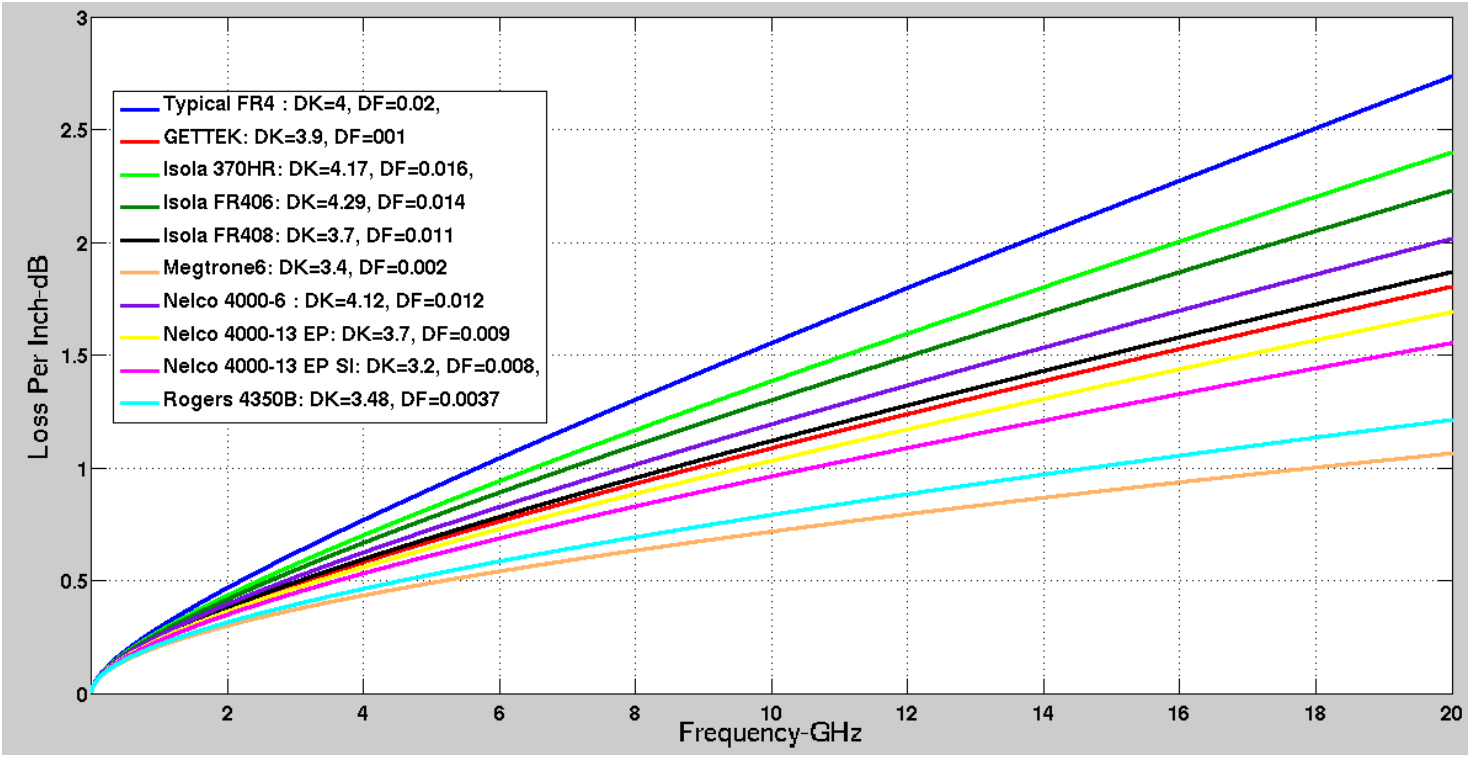
The attenuation of signals by different types of board materials
In the above figure, Typical FR4 has an average loss of nearly 2 dB per inch at 28 Gbps (Nyquist frequency is 14 GHz), while Megtron6 has only 0.85 dB at the same frequency.
Different fiberglass yarns have different weave patterns and thicknesses, and if signals are routed on windows and fiberglass, their characteristics (impedance, delay, loss) will also be different (due to the different Dk/Df characteristics of windows and fiberglass), which is the effect of fiberglass.

The manufacturing process of the core board
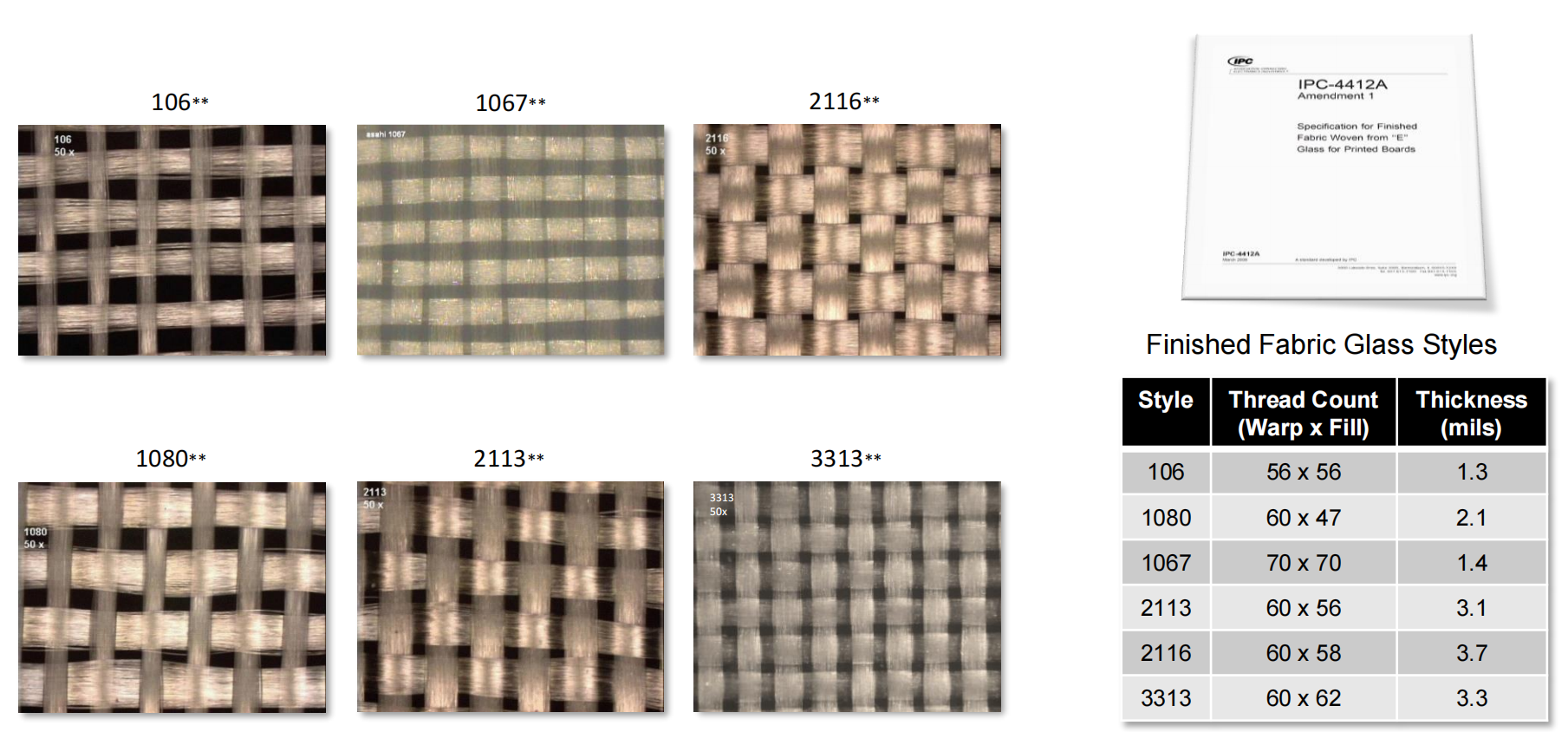
Types of fiberglass cloth
Methods to mitigate fiberglass effects:
1.Choose fiberglass materials with minimal resin windows;
2.Use 10° Zig-Zag routing methods;
3.Ask the board manufacturer to rotate the board by a certain angle during manufacturing;
4.Use flat fiber glass cloth or plain weave cloth.
Copper foil roughness (copper tooth) causes the line width and line spacing to be uneven, resulting in uncontrollable impedance. At the same time, due to the skin effect, the current is concentrated on the surface of the conductor. The surface roughness of the copper foil affects the length of signal transmission.
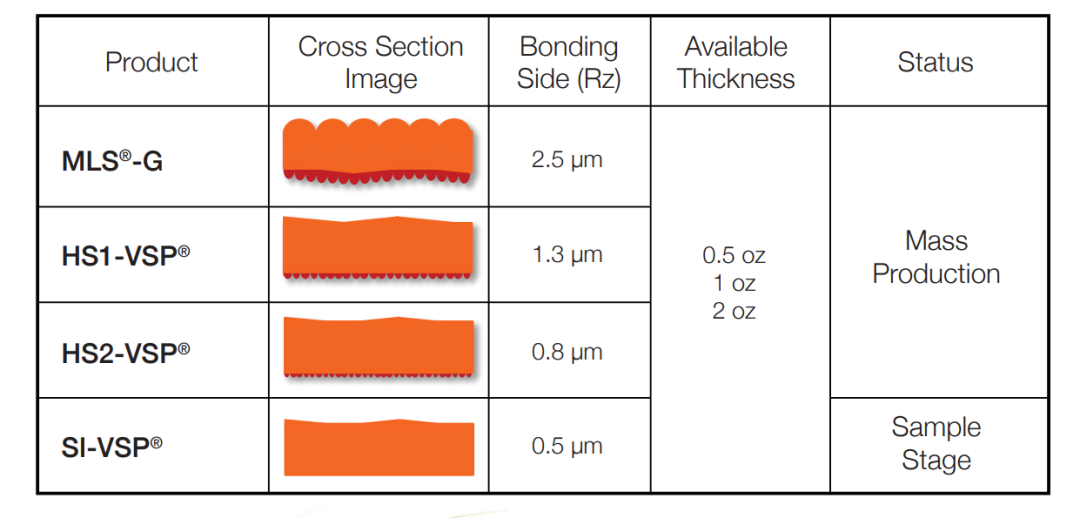
surface roughness of different grades of copper foil
As shown in the following figure, the impact of copper foil roughness is not too significant below 5 GHz, but it begins to increase significantly above 5 GHz. It is particularly important to pay attention to copper foil roughness in the design of high-speed signals above 10 GHz.
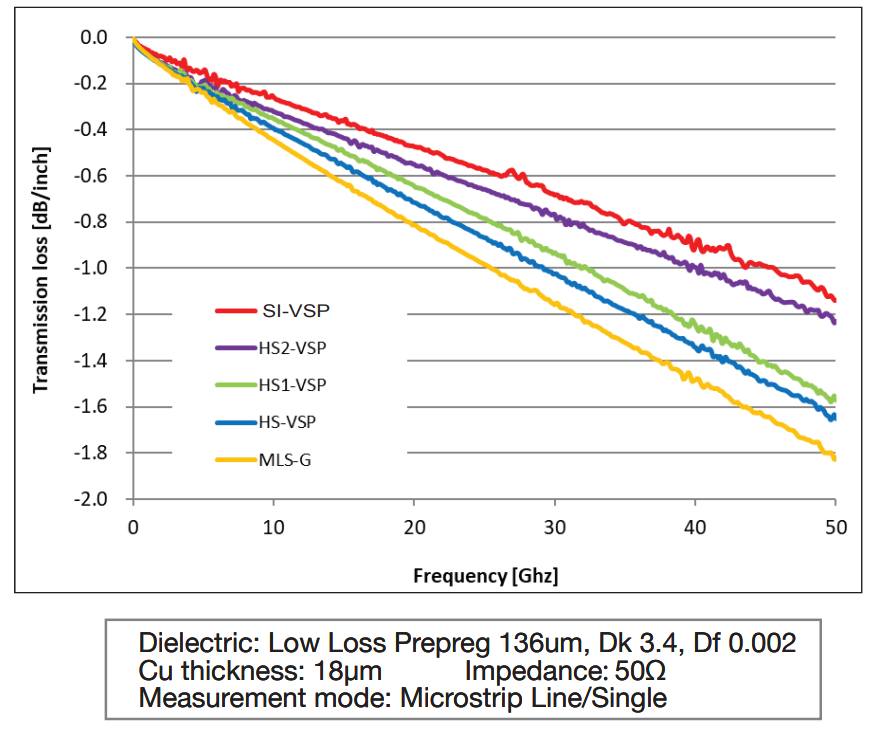
The attenuation of high-speed signals due to copper foil roughness
The thickness of PCB copper foil is measured in ounces (oz). There are three common sizes of copper thickness: 0.5 oz (internal layers), 1 oz (outer layers), and 2 oz, which are mainly used in consumer and communication products. Copper thickness above 3 oz is considered thick copper, and is commonly used in high voltage and high current power electronics products.
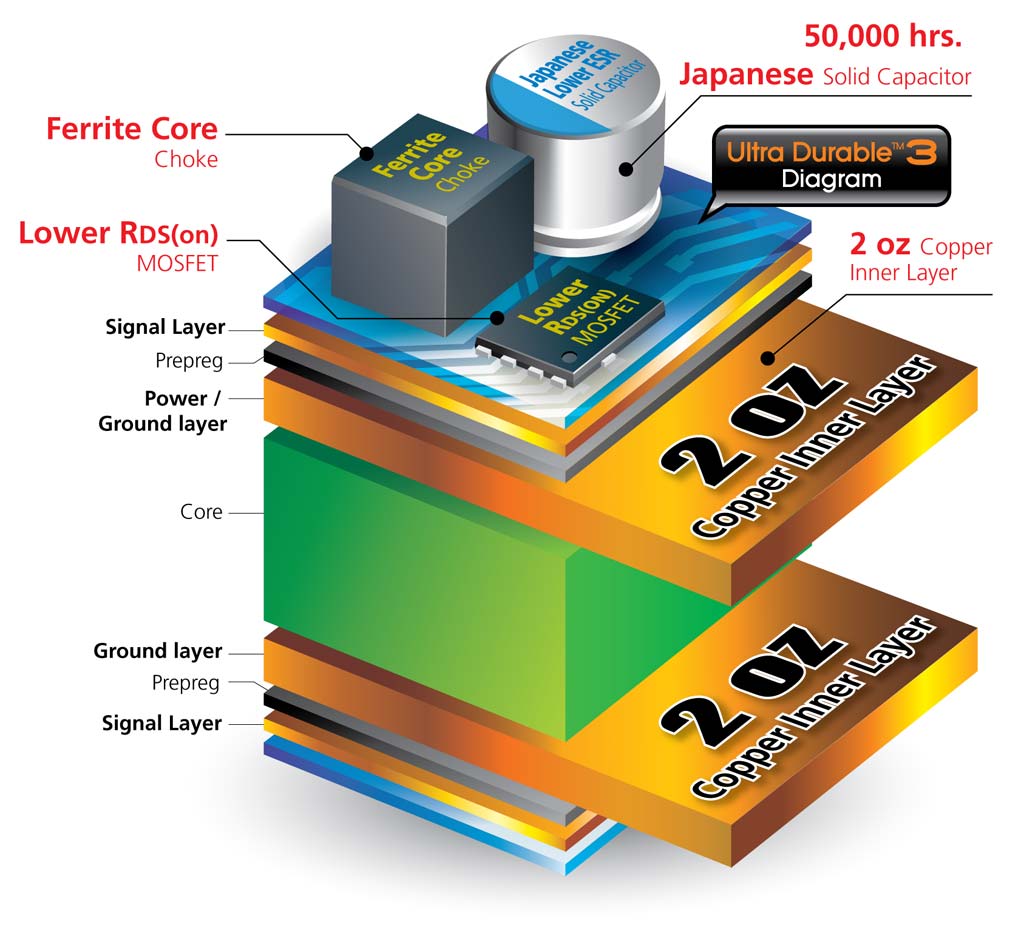
The lamination design of the power board
When designing the layered structure, it is necessary to balance the thickness of copper foil to ensure that the power/ground plane copper thickness meets the current carrying requirements. For signal layer copper thickness, the line width/spacing is smaller, and the copper needs to be as thin as possible to meet the requirements of accurate etching. Due to the skin effect, high-speed signal lines only have current flowing near the surface of the copper foil, and thicker copper foil does not necessarily result in better performance. Therefore, the copper thickness of inner signal layers is typically 0.5 oz (Hoz).
Many interface signal lines on PCBs have impedance requirements, such as common single-ended 50Ω and differential 100Ω. Impedance control requires a reference plane and generally requires more than four layers.
Impedance mismatch can lead to signal integrity issues such as signal distortion, reflection, and radiation, which affect the performance of the PCB. The copper thickness, dielectric constant, line width, and line spacing all affect impedance. We can calculate impedance using various EDA tools and then adjust the wiring parameters based on the designed stackup structure. Currently, conventional board houses can control impedance within 10%.
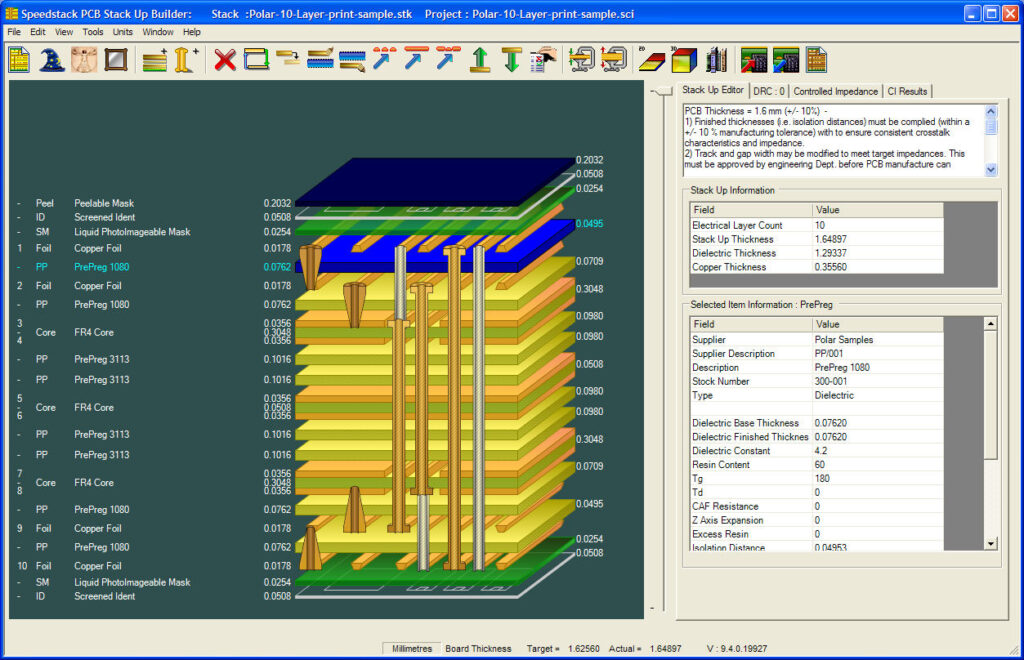
Using Polar to calculate impedance
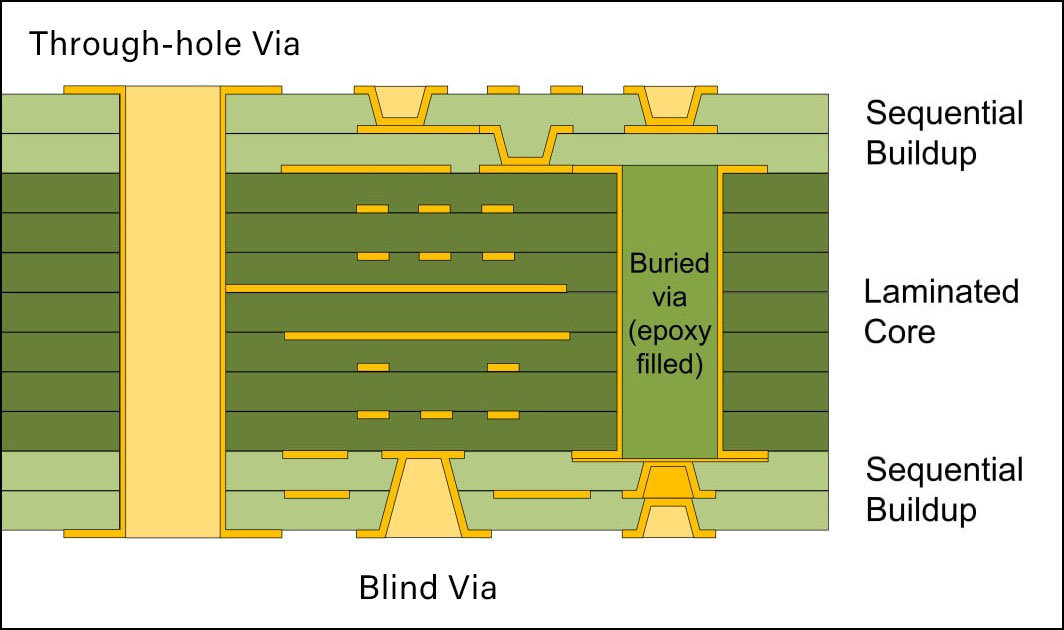
Types of holes in PCB
Through-hole (PTH) goes through the entire PCB and can connect all layers. Blind vias can connect outer layers to one or more inner layers, but do not penetrate the PCB. Buried vias only connect inner layers of the PCB.
High-density (HDI) PCBs often use blind vias and buried vias to optimize wiring space. Blind vias and buried vias also require multiple lamination steps, increasing the difficulty of PCB manufacturing and making it more expensive.
When designing the stackup, it is necessary to design the hole structure throughout the board based on design requirements, and simplify the hole structure as much as possible while meeting the design requirements.
When designing the EMC of the PCB stackup, the following principles should be followed:
1.The power plane and ground plane within the board should be placed as close to each other as possible. Generally, the ground plane is above the power plane, which allows effective use of inter-layer capacitance as a smoothing capacitor for the power supply. At the same time, the distributed radiation current on the ground plane acts as a shield for the power plane.
2.The power and ground planes are allocated in the inner layers. The ground plane can be regarded as a shielding layer, which can effectively suppress inherent common-mode RF interference on the circuit board and reduce the distributed impedance of high-frequency power supplies.
3.The wiring layers should be arranged adjacent to the power or ground plane to create flux cancellation effects.
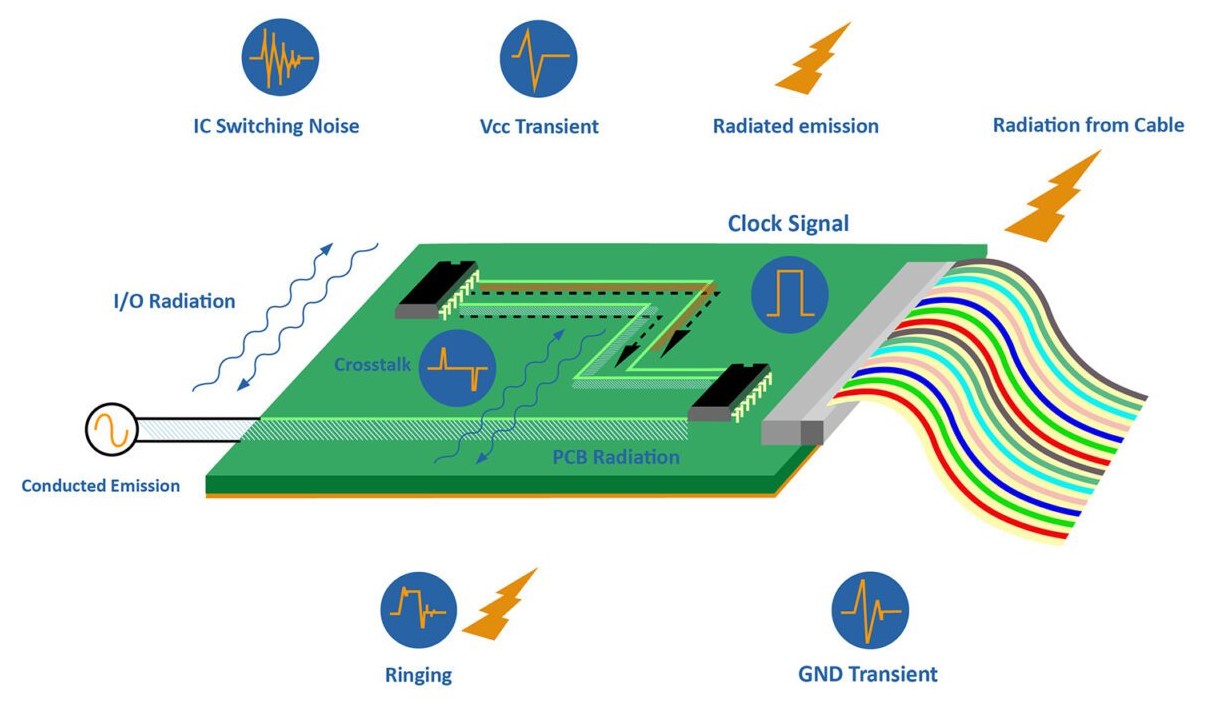
Radiation on PCB
The PCB stackup design needs to consider thermal management to ensure that the heat generated by components is effectively conducted away, preventing thermal damage and improving circuit reliability. In the design process, we will first perform thermal simulations based on the power consumption of components, and optimize the component placement and design corresponding heat dissipation solutions based on the simulation results.
During the stackup design phase, targeted heat dissipation design can also be done:
1.Prioritize selecting board materials with high thermal conductivity and select metal substrates on demand;
2.Design heat dissipation pads below high-power devices, and use heat dissipation holes;
3.Buried copper blocks and embedded copper columns can improve heat conduction efficiency;
4.Increase ground planes, lay out ground in blank areas, and increase the heat dissipation area.
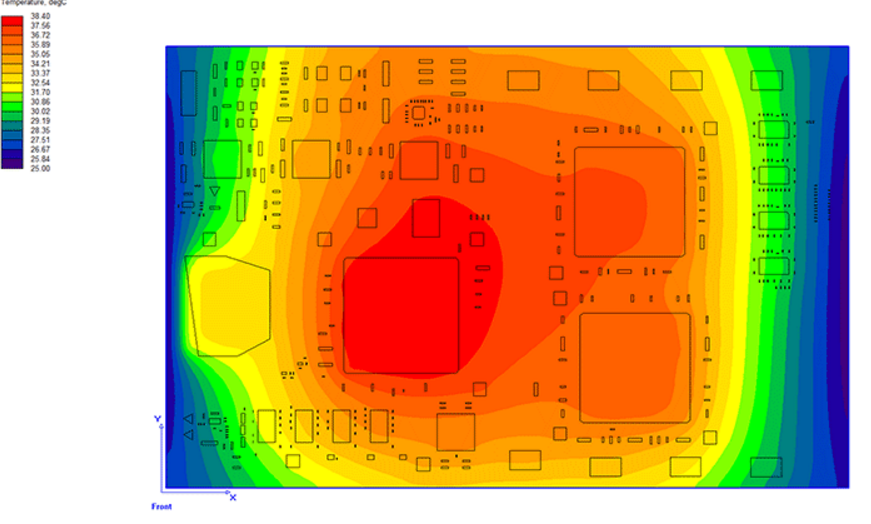
Board-level thermal simulation
The conventional thickness of PCB products is 0.5mm, 0.8mm, 1.0mm, 1.2mm, 1.6mm, 2.0mm, 3.2mm, 6.4mm, etc. Generally, the board thickness is relatively thin for small areas, and for areas with frequent insertion and extraction or large areas where structural reliability is crucial, the board thickness needs to be made thicker.
The PCB stackup design generally follows the following steps:
1.Determine the total thickness of the stackup, which is the board thickness;
2.Determine the number of PCB layers and allocate signal layers, ground plane layers, and power plane layers;
3.Determine the copper thickness of the inner and outer layers;
4.Determine the distribution of impedance lines;
5.Determine the via structure;
6.Determine the residual copper rate for each layer, which should be symmetrical;
7.Choose board materials, PP materials, and copper foil that meet the design requirements.
Taking a 12-layer board as an example, the designed stackup structure is as follows:
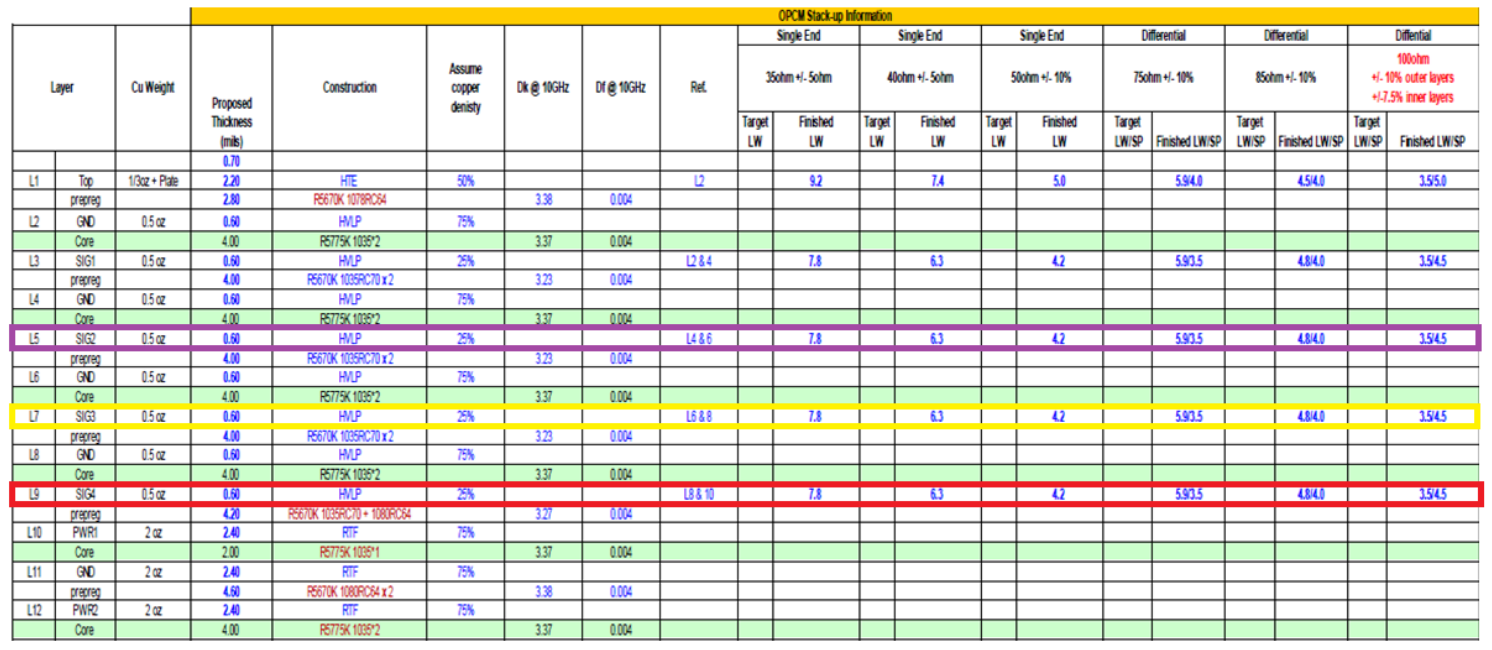
Note: The above content is collated from the Internet, and the copyright belongs to the original author. If there is any infringement, please contact us for deletion.